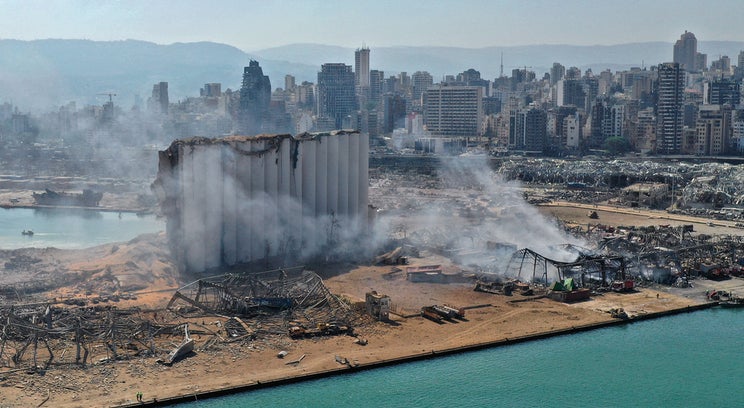
On a quiet afternoon of Aug. 4, 2020 around 6 pm, an explosion rocked the Lebanese capital, causing city-wide destruction with debris and bodies strewn everywhere. Although the blast happened at an off-peak time when most Beirutis’ workdays ended, sadly, 220 were killed and nearly 5,000 have been injured. The real cause of the blast is yet to be clearly identified. Speculations of an airstrike, terrorist attack, or a botched weapon shipment deal seem to lack credibility.
Regardless of what caused the tragedy, this article aims to shed light on the importance of having proper governance systems and guidelines for safe storage of chemicals at port facilities.
What happened?
It has been reported that Beirut port’s warehouse has been storing 2,750,000 kilograms of hazardous chemicals, such as ammonium nitrate (NH4NO3), hereinafter referred to as “AN”. AN is a potentially explosive substance and the risk of accidental fire or explosion is considered high if there is a presence of combustible materials or sources of ignition.
This amount of AN stored at Beirut port equates in explosive power to 1,300,000 kilograms of TNT. Port authorities confiscated this AN and stored in the port’s warehouses for nearly six years, which raises eyebrows about the efficiency and speed of the judiciary and law enforcement agencies in Lebanon.
An unknown factor caused the ignition of this dangerous chemical, resulting in the full obliteration of the old port terminal and the demolition of the new port terminal. The massive blast sent a shock wave up to 10 kilometers, ravaging buildings and infrastructure.
Beirut’s unusual summer heatwave should be ruled out as the cause, as AN requires a temperature of at least 210°C to explode. No matter what caused the ignition, the question remains whether those chemicals were stored safely or not.
Where should chemicals be stored at ports?
It is evident that dangerous chemicals, as well as hazardous waste, should be separated when stored at warehousing facilities. Chemicals such as AN must be stored in tightly sealed containers to avoid absorption of moisture, which could liquify the AN. In addition to the risk of fire and explosion, AN’s other main peril is decomposition into a toxic gas.
Several storage strategies exist for AN. It could be stored in intermediate bulk containers in dedicated open-air storage facilities or in freight container storage as loose bulk. It can be also stored in dedicated stand-alone facilities or in silos and bins. Whatever the type of storage used, AN must be kept in a properly ventilated area away from combustibles, flammables, timber, oil, and gas.
Why was the lesson tough?
Some reports from the capital Beirut alleged that welding activities were conducted near the AN storage facility at the port. If this is true, that would amount to a dismaying safety breach. AN storage facilities must have in and around them large placards prohibiting naked lights and smoking. Adequate training must be provided to personnel engaged with work around the AN storage areas.
A further report emerged claiming that fireworks were stored in the AN storage facility. That would be a blatant disregard for health and safety rules. AN storage facilities should be kept away from highly explosive materials. It is recommended to have a 5-meter area around AN storage facility clear from trees, shrubs, or any vegetation; vehicles; or equipment — let alone flammable or explosive materials.
The lesson was tough because proper governance systems and safety rules, if they existed there, were compromised, or at least not strictly followed.
The lesson was tough because the risk of explosion was not mitigated by having AN at least properly stored in intermediate bulk containers in open-air stores with adequate ventilation.
Indeed, the lesson was tough because security and safety personnel ignored a thick smoke that emanated prior to the explosion. That was the toxic nitrogen dioxide, an evident sign that evacuation must be immediately conducted. Instead, a firefighting truck rushed to the source of the smoke, and minutes after, the explosion blasted, and the truck vanished. The aftermath was devastating.
The key takeaway from this tough experience is that strict guidelines and a proper governance system addressing safe storage of dangerous chemicals should be developed at all ports by embracing and fostering the storage guidelines of the chemistry section of the International Social Security Association (ISSA). Tight security controls and adequate personnel training are critical.
As Lebanon battles the current tragedy, hopefully, the authorities have a disaster recovery plan and a business continuity program to help them navigate through this storm.
The views expressed in this article pertain to the author only and are not endorsed or driven by any organization.




